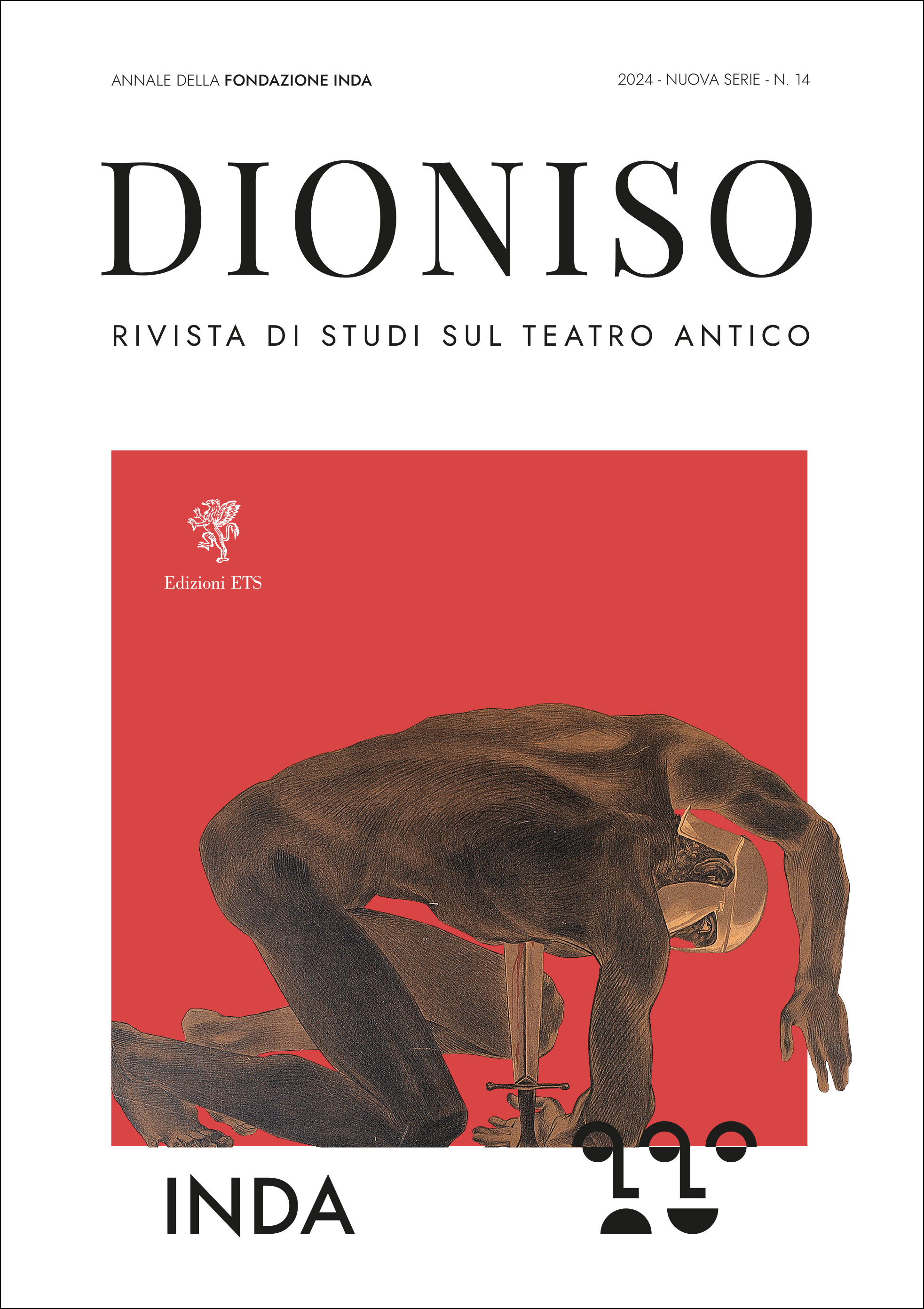On Pasolini’s Medea
The Unity of the Cosmos and the Diversity of Medea
DOI:
https://doi.org/10.4454/dioniso.v14.996Keywords:
Medea, Pasolini, Euripides, Seneca, re-enactment of the MythAbstract
The paper analyzes Pier Paolo Pasolini's Medea (1969), starting from a comparison with Pasolini's different drafts and with Euripides' hypotext. The analysis highlights the fundamental opposition between two antithetical civilisations – one, from which Medea comes, archaic, 'barbaric', defined by sacredness and ritual; the other, to which Medea arrives, marked by rationality and the negation of the sacred. This duality deflagrates in Medea's dreams, Pasolini's true great innovation with respect to the monologues of Euripides' tragedy: Pasolini's Medea arrives at the project (which is also desire) of revenge through contact with the Sun, a figure to which Pasolini gives much more space as the fulcrum of the eternal circuit of death and rebirth, and who makes vengeance somewhat human, guiding Medea towards the re-appropriation of her own roots and of the archaic civilisation from which she had distanced herself.
Published
Issue
Section
License
Copyrights are transferred for five years starting publication date from the author(s) to the Publisher. After this period, the content is released under a Creative Commons licence (Attribution-ShareAlike 4.0 International).


